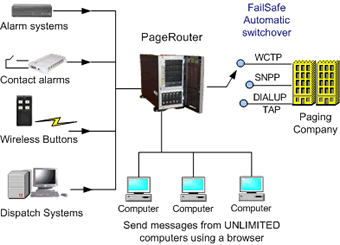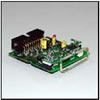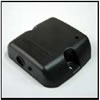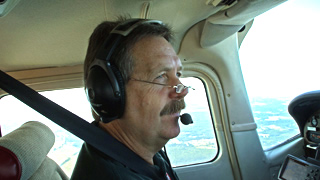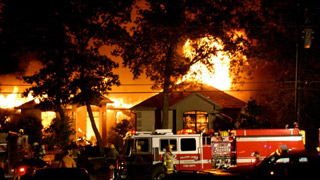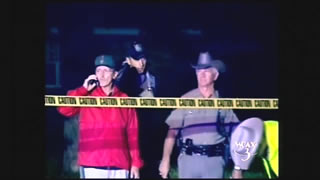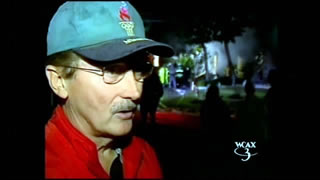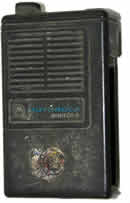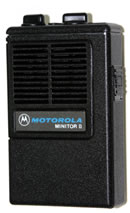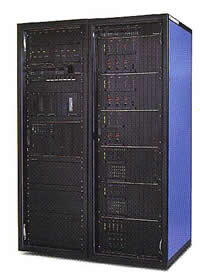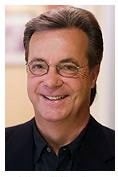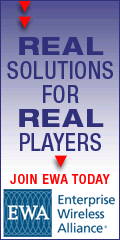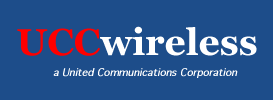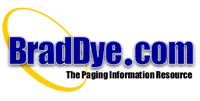BloostonLaw Private Users Update Published by the Law Offices of Blooston, Mordkofsky, Dickens, Duffy & Prendergast, LLP [Portions reproduced here with the firm's permission.] www.bloostonlaw.com |
| Vol. 10, No. 9 | x September 2009 |
 FCC Sets Procedures For Licensees In Wildfire Areas The FCC’s Public Safety and Homeland Security Bureau and the Wireless Telecommunications Bureau have announced procedures to help public safety, private and commercial wireless licensees maintain or resume operations in the event their facilities are threatened or compromised by the California wildfires. For additional information, licensees should contact the Public Safety and Homeland Security Bureau or Wireless Telecommunications Bureau staff listed below. Special Temporary Authority: Emergency requests for special temporary authority (STA) prompted by the effects of the wildfires and filed pursuant to Section 1.931 of the Commission’s rules may be submitted by informal letter or email or, if necessary, by telephone. Licensees may file requests electronically through the Universal Licensing System (ULS). All requests should provide the technical parameters of the proposed operation and a contact point. Clients needing STA should contact us as soon as possible. Sections 22.307 (certain CMRS), 90.407 (private radio), and 101.205 (microwave) of the Commission’s rules address operation during periods of emergency for licensees authorized under these rule parts. These rules allow licensees to provide emergency communications during a period of emergency in a manner or configuration not specified in the station authorization or in the rules governing such stations. In most instances, operation in dire emergencies is allowed without prior approval if done in accordance with the rule, to be followed by a request for STA or other appropriate filings immediately thereafter. BloostonLaw contacts: Hal Mordkofsky, John Prendergast, Richard Rubino, and Cary Mitchell. FCC Grants Waiver Of Quarterly Tower Lighting Inspections Where Certain Automatic Monitors Were Used The FCC has granted the requests of TowerSentry LLC and joint petitioners Diamond Communications LLC and Diamond Towers LLC (“Diamond”) for waiver of the requirement that the owner of any antenna structure that is registered with the Commission and has been assigned lighting specifications shall perform quarterly inspections of “all automatic or mechanical control devices, indicators, and alarm systems associated with the antenna structure lighting to insure that such apparatus is functioning properly.” The waiver was granted based on the use of advanced automatic light monitoring technology. If you believe that your tower would qualify for such waiver, you must file your own waiver request. The waiver granted by the FCC applies only to TowerSentry and Diamond. TowerSentry is an independent tower light monitoring company that monitors 610 antenna structures and other towers throughout the United States on behalf of a variety of clients. Diamond owns 150 antenna structures subject to the quarterly inspection requirement that are monitored by TowerSentry. Both TowerSentry and Diamond argue that the quarterly inspections of antenna monitoring systems mandated by Section 17.47(b) of the Commission’s Rules have been rendered unnecessary because of technological advancements associated with the particular monitoring systems that they employ—the TowerSentry Monitoring Systems (TSMS). TowerSentry and Diamond ask the Commission to waive the rule and instead permit annual inspections of all of the antenna structures monitored with these systems. The FCC granted Diamond its request for relief. In addition, while the FCC did not grant TowerSentry a waiver on behalf of its clients, it did establish an expedited process by which other users of the TSMS may request and obtain waivers of their obligation to perform quarterly inspections under Section17.47(b). The FCC concluded that the TowerSentry Waiver Request and the Diamond Waiver Request establish that quarterly inspections are unnecessary for those towers monitored by the TSMS. The Airspace and Rules Group of the Federal Aviation Administration has stated that it is not opposed to waivers of Section 17.47(b) “provided the applicant can demonstrate a safe and reliable automatic monitoring system with tracking mechanisms to evaluate the remote monitoring technology.” The FCC concluded that TowerSentry is operating a safe and reliable monitoring system with tracking mechanisms to evaluate the remote monitoring technology, and that features of this system provide sufficiently robust monitoring of the control devices, indicators and alarm system's so as to render quarterly inspections unnecessary. Indeed, such advanced technology provides the benefits of more rapid response where there has been a lighting failure, and thus the public interest is served with respect to aircraft safety. In addition, granting waivers to tower owners using the TowerSentry Monitoring System will save them hundreds of thousands of dollars annually that are unnecessarily spent on quarterly inspections where they have deployed this advanced technology. Specifically, any waiver applicant shall submit a certification that: (1) its towers are monitored by the TowerSentry Monitoring Systems under the process described in this order; and (2) it maintains a facility to receive notifications of failures from TowerSentry, which will enable the tower owner to carry out its responsibilities under Part 17 of the Commission’s rules. The certification shall be signed, under penalty of perjury, by a company officer (or partner, sole proprietor or similar person able to act on behalf of the tower owner) with knowledge of the underlying facts. Clients that would like our assistance in filing such waiver requests should contact us promptly. BloostonLaw contacts: Hal Mordkofsky, John Prendergast, and Richard Rubino. FCC Resolves ESV Issues In Reconsideration Order In an Order on Reconsideration, the FCC considered four petitions seeking reconsideration and/or clarification of the Commission’s 2005 Report and Order (ESV Order) in which it adopted licensing and service rules for earth stations on vessels (ESVs) operating in the 5925-6425 MHz/3700-4200 MHz band (C-band) and the 14.0-14.5 GHz/11.7-12.2 GHz band (Ku-band). ESVs are mobile transmitters that facilitate communications services, including broadband services and internet access, to cruise ships, merchant ships, ferries, yachts, U.S. navy vessels, and certain other maritime vessels that carry a stabilized satellite dish. In acting upon these petitions – filed by ARINC Incorporated (ARINC), the Boeing Company (Boeing), the Fixed Wireless Communications Coalition (FWCC) and Maritime Telecommunications Network (MTN)—the FCC resolved various concerns raised regarding the operational restrictions placed on ESVs that are designed to protect the fixed-satellite service (FSS), operating in the C-band and Ku-band, and the terrestrially-based fixed service (FS), operating in the C-band, from harmful interference. The revisions adopted by the FCC will provide ESV operators with greater operational flexibility while continuing to ensure that the other services in these bands are protected from harmful interference. More specifically, in the Order on Reconsideration, the FCC modified certain ESV rules for protecting FSS operations to provide operational flexibility to ESV providers while ensuring that the FSS operators are protected from harmful interference in the C- and Ku-bands. In addition, in the C-band, the Commission clarified the ESV requirement to protect offshore FS and clarified the Public Notice requirement related to the completion of ESV coordination with the FS at a particular location. Further, the FCC declined to review some of the FWCC’s issues raised in its petition because the FWCC failed to raise new facts or identify any material errors or omissions in the ESV Order. To further ensure flexibility in the Ku-band, the FCC shortened the distance from the U.S. coastline that triggers compliance with a bilateral agreement or ITU RR 4.4 by ESVs on foreign-registered vessels that operate with non-U.S. hubs. BloostonLaw contacts: Hal Mordkofsky, John Prendergast, and Richard Rubino. Maryland Correctional Unit Gets Experimental License The FCC’s Office of Engineering and Technology has granted a two-day experimental license to Tecore Networks. This license allows Tecore to participate in a demonstration organized by the Maryland Department of Public Safety and Correctional Services to understand alternatives to call-jamming that may be used to manage the use of cell phones in prisons. The Tecore system is designed to terminate unauthorized cell phone calls made from within a prison, while allowing authorized cell phone calls—including all calls to 911—to be connected through the wireless carrier as usual. In contrast to previous proposals for testing cell-jamming technologies, Tecore has worked with the Maryland Department of Public Safety and Correctional Services to establish test conditions that ensure against any interference or disruption of cell phone calls that are not part of the demonstration. Access to the test area at the prison will be controlled, and Tecore has submitted a letter signed by all of the affected wireless carriers consenting to the test. The initial demonstration was scheduled to be conducted on September 3, 2009, at the State Correctional Facility in Jessup, Maryland In addition to the demonstration of the Tecore technology, several vendors plan to demonstrate technologies that are designed to passively locate cell phones. BloostonLaw contacts: Hal Mordkofsky, John Prendergast, and Cary Mitchell. FCC Refuses to Reinstate Licenses that were Accidentally Cancelled by Licensee The FCC has dismissed as untimely a petition filed by Lodi Truck Service, Inc., requesting reconsideration of the cancellation of licenses for two industrial/business pool microwave stations operating under WEH205 and WGY470 in Modesto and Vacaville, Calif. On January 30, 2008, Lodi Truck Service filed applications requesting cancellation of the licenses for its Stations. The next day, the Wireless Telecommunications Bureau granted the requested cancellations and sent confirmation to Lodi Truck Service. The Bureau gave public notice of the cancellations on February 6, 2008. On March 10, 2008, the Bureau received Lodi Truck Service’s Petition. Section 405(a) of the Communications Act, as implemented by Section 1.106(f) of the Commission’s Rules, requires that a petition for reconsideration and any supplements thereto be filed within thirty days from the date of public notice of Commission action. Computation of the thirty-day period is determined in accordance with Section 1.4 of the Commission’s Rules. Since public notice of the license cancellations was given on February 6, 2008, pursuant to Section 1.4(b)(4) of the Commission's’s Rules, the first day to be counted in computing the thirty-day period was February 7, 2008. The last day for filing a petition for reconsideration and any supplement was March 7, 2008. The FCC received Lodi Truck Service’s Petition on March 10, 2008. Therefore, the FCC found that the Petition was late-filed. Moreover, the Commission has consistently held that it is without authority to extend or waive the statutory thirty-day filing period for filing petitions for reconsideration specified in Section 405(a) of the Communications Act. Consequently, the FCC said it must dismiss Lodi Truck Service’s Petition and Supplement as untimely filed. BloostonLaw contacts: Hal Mordkofsky, John Prendergast, and Richard Rubino. Costco, Wal-Mart Receive Illegal Marketing Citations The FCC has issued official Citations to Wal-Mart Stores, Inc., and Costco Warehouse Corp., respectively, for marketing non-compliant radio frequency devices, specifically, the Astak CM-918T2 wireless security camera in the United States in violation of Commission rules and the Communications Act. The Commission noted that future violations in this regard may subject the companies to monetary forfeitures. The FCC said that the Enforcement Bureau had received complaints alleging that the Astak CM-918T2 was causing harmful interference to Sprint Nextel’s licensed operation of its iDEN network in the 800 MHz and 900 MHz bands and that Costco and Wal-Mart were marketing this device. Staff from the Enforcement Bureau’s Spectrum Enforcement Division visited the store locations, tested the products, and determined that the Astak did not comply with the emission limits. Intentional radiators, such as the transmitter component of the Astak CM-918T2 wireless security camera, are generally required by Section 15.201 of the Rules, to be approved through the equipment certification procedures described in Sections 2.1031—2.1060 of the Rules prior to marketing within the United States. As an intentional radiator operating at 905 MHz and 924 MHz, the Astak CM-918T2 is also subject to the radiated emission limits specified in Section 15.249(a) of the Rules for operations within the 902-928 MHz band. In addition, pursuant to Section 15.249(d) of the Rules, except for harmonics, emissions from the Astak CM-918T2 radiated outside the 902-928 MHz band must be attenuated by at least 50 dB below the level of the fundamental frequency or to the general radiated emission limits specified in Section 15.209 of the Rules, whichever is the lesser attenuation. The OET Laboratory’s tests demonstrate that radiated emissions from the Astak CM-918T2 outside the 902-928 MHz band substantially exceed the limits specified in Section 15.209 of the Rules. Therefore, the Astak CM-918T2 does not comply with the radiated emission limits specified in Sections 15.249(d) and 15.209 of the Rules. Accordingly, it appears that Costco and Wal-Mart violated Section 302(b) of the Act and Sections 2.803, 15.209 and 15.249(d) of the Rules by marketing in the United States the Astak CM-918T2 wireless security camera. Costco and Wal-Mart have 30 days to respond to the citations. They are subject to $16,000 in fines if they subsequently violate the FCC’s rules. BloostonLaw contacts: Hal Mordkofsky, John Prendergast, and Richard Rubino. | 










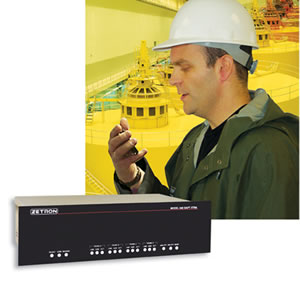 The Model 640 DAPT-XTRA Paging Terminal is a cost effective solution for small to medium-sized systems and private organizations offering a paging service based on bureau-type operator paging and/or direct telephone access. The 640 supports up to 1,500 users with up to 4 telephone lines. It also supports voice paging, voice prompts, talkback paging, and alphanumeric paging.
The Model 640 DAPT-XTRA Paging Terminal is a cost effective solution for small to medium-sized systems and private organizations offering a paging service based on bureau-type operator paging and/or direct telephone access. The 640 supports up to 1,500 users with up to 4 telephone lines. It also supports voice paging, voice prompts, talkback paging, and alphanumeric paging.  Zetron's Remote Monitoring equipment provides monitoring and notification of unusual conditions and status changes. Messages are automatically transmitted over a radio or a public address system. Notification can be sent via speaker or radio announcement, telephone, cellular phone, or paging.
Zetron's Remote Monitoring equipment provides monitoring and notification of unusual conditions and status changes. Messages are automatically transmitted over a radio or a public address system. Notification can be sent via speaker or radio announcement, telephone, cellular phone, or paging. 


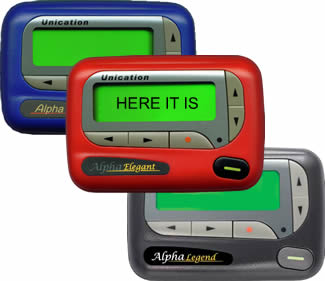
 NEW ALERT AND RINGTONE AMPLIFIER
NEW ALERT AND RINGTONE AMPLIFIER 


